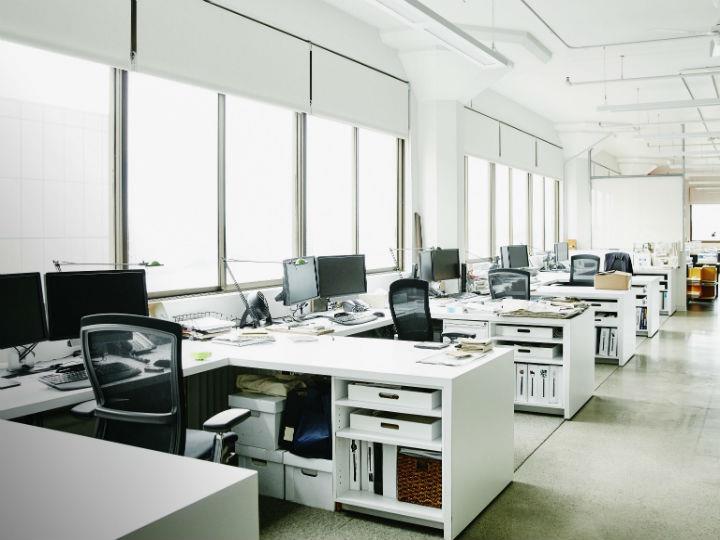by Mark Pringle*
The COVID-19 pandemic has forced organizations across the globe into a balancing act – protecting the health and safety of their employees while simultaneously continuing their operations. Like all essential businesses, Dell Technologies is working through this challenge to implement the most effective approach for protecting as many stakeholders as possible. And, it’s critical that we partner with customers to put their business continuity, remote working and digital services into practice.
As we began creating our company’s return to site strategy, it became clear that the workplace impact would not be a temporary one, and organizations that seize this opportunity to change how they work will outpace their peers. This concept compelled us to create a formal Customer Playbook that serves as reassurance that our plan – and business – are strong, as well as providing guidance on how to leverage these strategies to strengthen their own businesses.
Emerging opportunities
As governments at local and federal levels start to lift restrictions and ask employees to “return to work,” we must remember: we are already at work. Our team members who are required to be in a facility or in the field are steadfast in their support of our customers. Meanwhile, the remaining 90% of our workforce continues to be productive working remotely.
We know coming out of this crisis that many of our team members won’t need to return to corporate sites, at least not on a full-time basis. While every industry and every business is different, it’s critical that organizations reinvent and redefine “work” in the new world. We must change how we think about spaces, cybersecurity, meetings, travel, events and policies, and we mustn’t forget the ways employees find balance through their family, volunteer work, hobbies and more. We need to evolve the dated mindset that being in an office full-time is an actual business imperative.
As we rethink where business is done, it creates the opportunity for organizations of all sizes to advance and achieve their goals and experience a more flexible culture, reduce their carbon footprint, enhance diverse talent recruitment and make new investments in innovation.
How does this paradigm shift enable us to do all of this?
Businesses should start with an honest accounting of how a reduced on-site workforce with more flexible workplace conditions can help the business execute on its strategy. We’ve aligned our business objectives with our evolving workforce in the following ways:
-Use our values to develop new ways of working, with high levels of engagement and productivity.
-Create a stronger customer and team member experience by investing time and money on the things that matter most.
-Start from the top, with a leadership team and ethos culturally committed to increasing our work-from-home footprint and team member flexibility and choice.
-Be a leader in workplace flexibility with a goal of 50% (or greater in countries with the right infrastructure) of our team members in flexible work arrangements.
-Advance progress against our 2030 Moonshot goals by reducing our carbon footprint and opening new opportunities to bring in diverse talent.
Although this is specific to our own approach and goals established before the pandemic arrived, we’re confident it’s a strong framework for customers to consider as they adapt their own goals, along with the right technology to accelerate innovation and growth.
Of course, to achieve these goals, we must prioritize the safety and wellbeing of our team members at every step. This includes planning our return to site in a way that prioritizes flexibility and will require fine-tuning as we learn through the process. The way we’re approaching our strategy is focused on health first, through graduated return to site for different functions based on need and flexible schedules.
This strategy takes a conservative approach and relies strongly on data and science to determine safety and readiness, align to local government regulations and follow health and hygiene guidance. It also ensures we support our customers and partners, focus on teams who need to be on-site for enhanced productivity, and enables employees to return to the office while taking into consideration the future state of work.
Once the conditions are right, organizations should focus on four key pillars to ensure a smooth transition of team members back onsite while cementing the conditions for greater innovation and flexibility:
-Return to site risk assessment – Evaluate the infection rates, active cases, recovery and scaled increase trends of the country/specific location to determine how safe it is for team members to return to site.
-Pre-opening readiness – Assess and prepare for team members to return to site while ensuring hygiene, social distancing, and infrastructure all support team member health and productivity.
-Phased return to site – Start with those team members who are physically required to be onsite, and gradually move to those functions and people who prefer to come to their place of work; as well as accommodating those who don’t feel comfortable to return.
-Communication – Develop transparent and frequent communications, with a feedback loop, to team members and communities.
We’re rarely afforded the opportunity to make such dramatic changes to our businesses in such a short period of time – even rarer still is the ability to do so in a way that will better prepare our teams for the changing digital landscape while helping us achieve organizational goals around sustainability, diversity and innovation. Although it’s not a change that anyone asked for, it’s the change that will help us create more flexible, sustainable businesses that put people first.
*Senior Vice President of Corporate Real Estate, Global Facilities and Environment, Health and Safety, Dell Technologies
**first published in: www.weforum.org




 By: N. Peter Kramer
By: N. Peter Kramer
